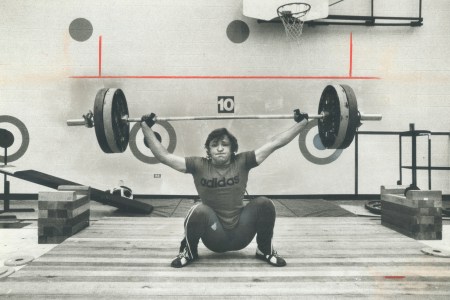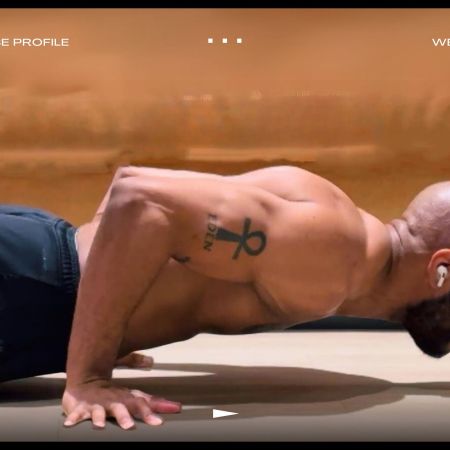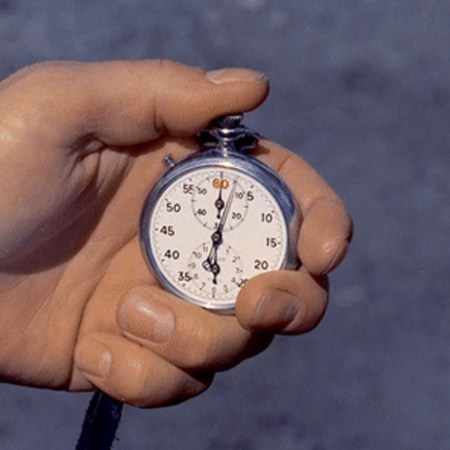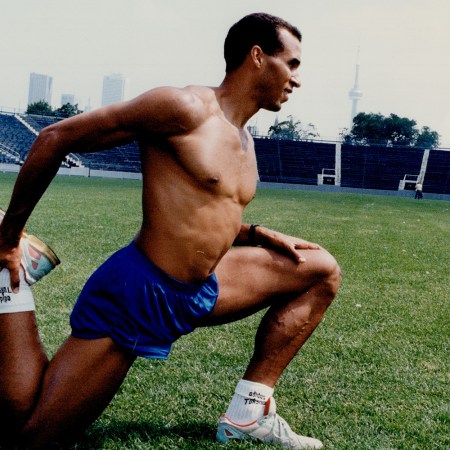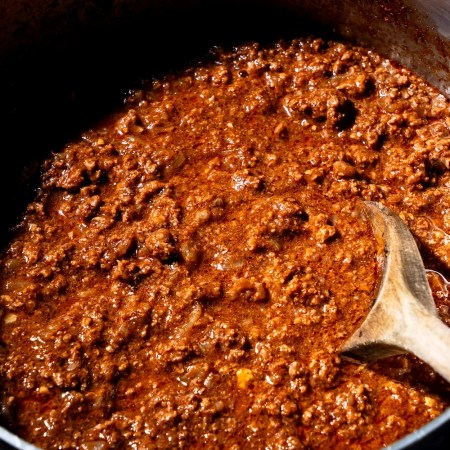If you’re getting up there in years, you can probably pinpoint the time that you were in “the best shape of your life.” It might have been a specific summer, or a single photograph, or a bench press PR.
Fitness has long maintained this strange, hazy connection with nostalgia. As we get older and slower and duties pile up, it seems perfectly reasonable to assume that your physical prime is firmly in your past.
One casualty of that conclusion? You stop going for it in the gym. Safer to play out the back nine of your life on a bike or yoga mat. (Or on the couch.) How many men are actively trying to earn back their physique from years or decades before? How often do you hear about 40-and-uppers starting a strength-training program for the first time?
Not too often, right? And when you do, you think Good luck. Or Jeez, be careful.
But we’re here to tell you to drown out that noise. We spoke to a variety of professional trainers and powerlifters, all of them in the 35-60-ish demographic, and they’re in agreement: it’s definitely tougher for old guys, but it is possible to build serious mass.
It’s also worthwhile. Setting fitness goals later in life can imbue trainees with a distinct feeling of purpose, while bulletproofing their bodies against the more pernicious effects of aging. (In other words, you’re less likely to trip and fall at 80.) Below, our expert guide to putting on muscle in middle-age.
What It Takes to Win Your Age Group at HYROX
52-year-old Ken Rideout talks four weeks of training, dreaded wall balls and victory in NYCAn Ideal Routine
There are a couple different options for how to go about building muscle, but the core principles remain the same. If you want to get big, no matter your age, you need to develop a dynamic strength-training plan and faithfully stick to it each week.
One method is a split routine, which uses compound movements to target major muscle groups. Robert Herbst, a 61-year-old, 19-time world champion powerlifter, says to “focus on squats, bench press and deadlifts. Train at least four days a week and split up the body parts to allow recuperation. They should periodically cycle from high to low reps while adding weight and then go back.” Over the course of a month, that might mean: one week of low weight, the next with medium weight, the next with high weight, then back down to low. The circuit continues from there. Take note of Herbst’s commitment to legs; leg day isn’t fun, but it increases testosterone levels and actually makes it easier to build muscle everywhere else in the body.
Meanwhile, Matt Phelps, the founder of stength-training program Metabolic, endorses sessions with less volume, but more targets. “Each session should have an upper-body push, upper-body pull, hip hinge, lower-body accessory movement, and a core exercise,” he says. “Keep rest periods low between non-competing muscle groups in order to maximize cardiovascular conditioning, and simultaneously burn fat.” This method is a bit more new age-y, and incorporates elements that have made HIIT training and bodyweight exercises popular and accessible for guys looking to trim fat while simultaneously building muscle.
Know Your Testosterone
Testosterone levels in most men decrease by about one percent each year after the age of 30. And while we generally reference that falloff when discussing things like weakened libido, erectile dysfunction or impotence, lower levels of testosterone also make it objectively harder to put on or maintain muscle.
Basically, muscle fibers strengthen when testosterone binds to androgen receptors. As men lose testosterone, though, muscles weaken, and estrogen swoops in to create fat. Because lower testosterone is also accompanied by fatigue, it can feel impossible to break the vicious cycle.
But strength training can help. Anthony Balduzzi, founder of the Fit Father Project, says: “As we age, testosterone levels will drop considerably, but compound (multi-joint) movements can help combat that fall.” Before beginning those movements, try to lose some of the weight you’ve accrued from simply becoming a middle-aged man. This might mean adding some aerobic routines (jogging, jump roping, longer rep-centric lifts) into your weeks. It will jumpstart your muscle gain, trust us. Oh, and unless you have abnormally low levels of testosterone, stay away from testosterone replacement therapy (TRT). It has helped people get in better shape, but it comes with a number of risks, including heart problems and negative effects on the prostate.
Diet Is King
And supplementation is the crown prince. Bulking will not happen, period, if you’re not putting the right stuff (or the right amount of it) on your plate. As Balduzzi explains, “For bulking, we need to eat at a caloric surplus. But we want the right calories so we put on muscle instead of fat. Focus on lean proteins (chicken, fish), complex carbohydrates (brown rice, quinoa), healthy fats (extra virgin olive oil, avocado), and veggies (broccoli, asparagus). And look into supplements like creatine monohydrate, Vitamin D, magnesium and fish oil, which will all help your body run smoothly, maximize your workouts and promote restful recovery.”
Of course, protein is really important, too. Herbst recommends that aging guys “support the work they’re doing in the gym by eating at least one gram of protein for every two pounds of body weight.” (So, a 180-pound man should aim for 90 grams of protein.) That protein can be procured from some of the meats listed above, or by a protein powder.
Bands and Bodyweight
It’s important to keep an open mind about what constitutes “lifting.” If you’re taking your strength-training time machine straight back to the 1980s, you’ve probably got tunnel vision for plates, dumbbells and barbells. Fair enough. Just recognize that free weights can invite serious strain on the joints.
That’s not because they’re inherently ill-suited for exercise; they’re just really freaking heavy, and can do a number on you if your form’s off or you have a lurking injury. (Think: pressing 25-pounders over your head when you have wonky shoulder mobility.)
This is where it pays to make use of resistance bands and bodyweight exercises. We’d recommend integrating bands into your routine with moves like banded squats, banded push-ups, rows, lateral raises and tricep presses. These exercises enhance muscle activation and improve strength across a full range of motion. Pair these with bodyweight staples like pull-ups, push-ups, parallel dips, air squats, lunges and plank variations in order to develop functional strength.
It’s Time to Give “Slow-Motion Lifting” a Try
Sets that take 200 seconds to complete? Allow us to explain.Take Your Rest Days
“Don’t do more than four or less than three.” That’s Eddie Johnson, certified fitness trainer and founder of Anabolic Bodies, and he’s right. Three days of strength training is a good baseline to make sure you stay dedicated and see gains, but four days has to be your limit. When you’re 20 and mowing lawns for a summer, you can head to the gym for five to seven days a week. At any age above 35, though, your body absolutely needs those rest days. They allow your muscles to repair, give you a much-needed breather (which will result in better workouts later in the week) and let you focus on other aspects of your fitness.
Surfer/aging fit guy Laird Hamilton recommends eating more on rest days, going for a walk (rest days don’t mean an excuse to sit on the couch all day), focusing on breathing and getting some tissue work in. Sleep is also extremely important. As your rate of recovery is slowing down, and only getting slower (plus, you’re more susceptible to injury), make sure you get lots of shut-eye. We’re huge proponents of spending big on sleep. You spend half your life in bed. Get a good one.
Cut Back on Drinking
This publication isn’t going to tell you to quit drinking. That advice would fly in the face of the 15,000 booze articles we write each year. However, you’ve got to be mindful of what and how much you drink. Obviously, the big culprit when trying to build sustainable muscle is beer intake.
Thankfully, the craft beer industry has spent years retreating from the sugary, high-calorie IPAs we all started guzzling in the early 2010s. Take advantage of a variety of light or no-alc beers (e.g., Evil Twin Bikini Beer, Harpoon Rec. League, Sunday Beer, Ballast Point Lager, Athletic Brewing). Try to limit ciders, cocktails with soda, and anything with a huge piece of fruit in it. You will get a brutal hangover, and you will miss your next workout.
It’s Not Going to Happen Overnight
Bulking never does! It takes years to build defined mass on one’s frame, no matter how old you are. Once you master your base routine (no easy task) you have to figure out ways to “shock” your body, and introduce varying levels of weight, or it’s going to prove very difficult to see consistent gains. It’s also notably more difficult to invest that much emotional energy into your body when you’re neither a college sophomore nor starring in the next Marvel spin-off.
We recommend gamifying the process. Keep notes on things like the weights you’ve put up or the amount of pull-ups you can do. Get a buddy involved. Celebrate minor victories and let them fuel your future efforts.
When you’re in the gym, focus on “time under tension” (TUT), or the amount of seconds that your muscles are under strain. Try to perfect the move, and consider, while you’re lifting, exactly what the move is, how it feels. This is called mind-muscle connection, and will help you understand the exact mechanics of what you’re doing, while perfecting your form.
Your body is slowing down and there are grocery store runs, business trips and little league games you can’t miss. It’s a lot to add a solid strength-training routine to that schedule. But with a little thought, and a whole lot of dedication, it can be absolutely be done.
This story was originally published on August 9, 2019.
Whether you’re looking to get into shape, or just get out of a funk, The Charge has got you covered. Sign up for our new wellness newsletter today.


